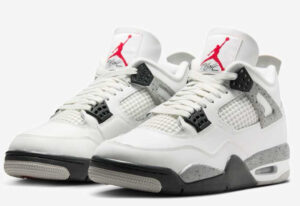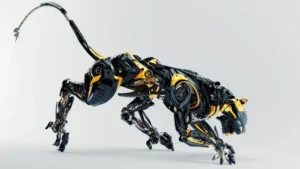
In a cinematic collision of sound, speed, and sensuality, The Weeknd has unveiled the official music video for his latest single, “Drive”, a moody, atmospheric cut from his anticipated album The Idol: Final Cut. But this isn’t just another sleek visual drop. Co-starring Jenna Ortega, the video elevates The Weeknd’s penchant for high-concept noir to new heights, blending erotic tension and highway nihilism in a narrative that burns like brake pads on asphalt.
Directed by longtime creative collaborator Cliqua, “Drive” is a slow-motion descent into the glossy hellscape of Los Angeles nightlife. It’s a meditation on isolation, desire, and the way speed becomes a metaphor for escape when emotional wreckage piles up. Jenna Ortega, who has rapidly risen from indie darling to Gen Z icon thanks to Wednesday and Scream VI, offers a magnetic counterpoint to The Weeknd’s brooding presence—her gaze is both vacant and defiant, a perfect cipher for the song’s themes of love gone hollow.
From neon-streaked desert highways to mirrored motel rooms, the video’s universe feels like it exists halfway between Drive (2011) and Lost Highway (1997). This isn’t just a music video. It’s a statement piece: a fever dream wrapped in leather and low light.
The Track: Synthwave for the Brokenhearted
Musically, “Drive” is The Weeknd in full retro-futurist form. Leaning heavily on synthwave aesthetics, the song pulses with analog arpeggios, gated reverb, and an electronic melancholy that evokes both Prince and Kavinsky. But unlike the hedonism of Blinding Lights or the glam-pop uplift of Save Your Tears, “Drive” returns to Abel Tesfaye’s early themes: addiction, detachment, and the cold afterglow of passion.
The production—helmed by Tesfaye himself along with Oneohtrix Point Never and Metro Boomin—is dense but spacious. The beat creeps in with a low-frequency hum, the synths stretch like light trails in your rearview, and his voice floats in between regret and obsession:
“She said drive / don’t look back, no headlights / just smoke and silence…”
It’s not a dance song. It’s a ghost song, one that lingers long after it ends.
Jenna Ortega: The Passenger With Secrets
Ortega’s casting is no accident. In her first major role in a music video, she trades in her gothic Netflix aesthetic for something sharper, colder, and more mysterious. She plays the unnamed passenger—a cipher with smeared mascara, leather gloves, and an expression that never fully reveals her hand. Her chemistry with The Weeknd is electric in its restraint. There’s no overt intimacy, no kiss, no climactic breakdown. Instead, there’s a shared understanding that the ride is both literal and symbolic. They’re going nowhere together, fast.
In one standout sequence, the two sit silently in a parked car under buzzing gas station lights. She smokes a cigarette. He watches her. Neither speaks. It’s a masterclass in stillness.
“I didn’t want her to play a love interest,” said Tesfaye in a behind-the-scenes clip. “She’s the metaphor. She’s the escape. Or maybe the reason he can’t.”
Ortega’s character shifts from muse to menace with ease, blurring the line between salvation and sabotage. It’s the kind of visual performance that redefines what a music video cameo can be.
Visual Language: Noir Through a Postmodern Lens
The “Drive” music video might be set in L.A., but it feels like it’s happening inside someone’s memory. The color palette is soaked in deep reds, midnight purples, and artificial neons. The camera lingers on reflective surfaces—car windows, chrome bumpers, motel mirrors—creating a motif of duality and fractured identity.
The cinematography, courtesy of Xavier Grobet, leans into the long-take rhythm of 1980s thrillers, echoing films like Thief or To Live and Die in L.A.. There’s a heavy grain to everything, evoking the texture of film even though the final product is digital. Visual references abound: Nicholas Winding Refn’s Drive, Lynch’s Mulholland Drive, Harmony Korine’s Spring Breakers.
It’s both derivative and deeply original—a pastiche that understands its visual lineage but moves beyond homage into myth-making.
Narrative Structure: The Road as Metaphor
The video follows a loose narrative arc: two lovers (or strangers) on the run. Or maybe not on the run at all—just running. The ambiguity is intentional. The only constants are motion and mood.
In the first act, we see The Weeknd alone, driving a 1987 Buick Grand National through a blood-orange desert. He picks up Ortega from a roadside bar, her eyes unreadable behind oversized sunglasses. They drive through tunnels, under overpasses, and into the city, occasionally stopping in gas stations, diners, and dead-end alleys.
In the second act, they arrive at a motel—room 210. The inside is beige and bleak. He watches her fall asleep on the bed, still fully clothed. He steps into the bathroom and stares into a mirror. His reflection is gone. In the final act, he wakes up alone. The car is gone. So is she.
But her lipstick remains on the rearview mirror.
Was she ever real?
Styling and Symbolism
Styled by Tesfaye’s go-to fashion director Matthew Henson, the wardrobe is another character in the story. The Weeknd dons black leather jackets and vintage Saint Laurent boots, channeling a ’90s film noir antihero. Ortega wears a vintage red vinyl trench coat—part Gilda, part Ghost in the Shell.
Other visual symbols pepper the video:
- A cigarette crushed into an “XO” ashtray
- A plastic motel key labeled “Drive”
- A broken speedometer permanently stuck at 85 mph
- A recurring raven that lands on car antennas or signage
These are clues—not to a literal story, but to an emotional one. Each item feels like an object carried from a dream.
Public Reception and Streaming Numbers
Unsurprisingly, the “Drive” video debuted to enormous fanfare. Within 24 hours, it had 15 million views on YouTube and began trending across X (formerly Twitter), Instagram, and TikTok. Fans and critics alike praised its cinematic ambition.
Variety called it “a short film disguised as a music video—every frame is haunted by longing.”
Rolling Stone described Ortega’s appearance as “eerily magnetic.”
And fans flooded Reddit threads and fan forums, debating Easter eggs, timelines, and whether “Drive” ties into The Weeknd’s larger After Hours universe.
Jenna Ortega’s Transition Into Visual Music Culture
For Ortega, the role marks a shift in her portfolio. Known for horror, coming-of-age, and subversive teenage angst, “Drive” lets her enter the fashion-music-visual art trifecta. It’s the kind of prestige appearance that elevates a star into icon status, placing her in the same league as Zoë Kravitz or FKA twigs.
Her stillness in the video—her economy of movement and microexpression—proves that she doesn’t need dialogue to dominate a screen.
What “Drive” Means in The Weeknd’s Career Arc
Since House of Balloons, The Weeknd has always used music videos as extensions of self—audiovisual confessionals that blur the line between Abel Tesfaye the person and The Weeknd the myth. “Drive” feels like both a continuation and a departure.
It connects with his longstanding obsessions: cars, women, alienation, and doomed romance. But it also suggests a weariness—a desire to retreat. He’s not chasing the high anymore. He’s watching it disappear in the rearview.
In interviews, Tesfaye has hinted that The Idol: Final Cut might be his last project under The Weeknd moniker. If that’s true, “Drive” feels like a fitting goodbye: not with a bang, but a slow drift into the horizon.
Neon and Nothingness
With “Drive”, The Weeknd and Jenna Ortega don’t deliver a plot—they deliver a vibe. And in today’s era of overstimulation and algorithm-fed visuals, that kind of restraint feels revolutionary.
This is a video you don’t just watch. You sink into it. You sit with the silence between lines, the tension between glances, the stretch of road that never quite ends. It’s a masterclass in visual storytelling, in mood construction, in musical noir.
And when it fades to black, you’re left with just the hum of the engine, a cigarette still burning, and one unanswered question:
No comments yet.








